The world’s highest mountains are going to be busy this spring. Everest tops the list with perhaps 1,000 summits smashing all records.
Currently, the trails of Nepal are filled with hundreds of climbers, porters and Sherpas and even more trekkers. The teahouses are full and the local economy is benefiting from what appears to be a full recovery from several poor years.
And with the recovery comes the crowds. Predictions of a busy season are coming true, more so on the highest peak than any other.
Excellent reporter Rajan Pokhrel of The Himalayan Times in Kathmandu reported that the Ministry of Tourism has already issued 250 permits for Everest to 27 teams representing 28 nationalities. This represents almost $2 million in revenue for Nepal thus far. They are still expecting 500 foreigners. 70 Everest climbers used their 2015 permits that were extended due to the earthquake.
Private Crowds
A trend I’ve noticed that seems to be wildly escalating this year are so-called “private climbs.”
Usually this involves one member with one Western guide, plus Sherpa support. As I noted in this week’s interview with Jon Gupta, who is guiding Mollie Hughes, this is a true 1:1 plus Sherpa support team. But other traditional commercial teams are promoting their private guiding but include that member with their regular members.
The only difference is they are paying for personal guiding with their exclusive western guide. This comes at a huge cost, sometimes as much as $100,000 compared to $55-65,000 for the others members.
One commercial team has eight members with two guides then three private members each with their own western guide – plus massive Sherpa support.
I bring this up because it is contributing to the crowding issues on Everest. This one member may be employing two to five support personnel not including cooks, porters, etc. Thus when 500 foreigners get permits, that means 500+ support staff on the mountain. Looking back 30 years, a national team probably had 10 members and only a few climbing Sherpas.
To some extent, this new trend of “over support” may be a commentary on the skills of those attempting to climb to the top of the world or a very expensive insurance policy that has no guarantees.
Uniquely Everest
In addition to the expected 1,000 foreigners and Sherpas just on the Southeast Ridge route (aka normal), we now have details on a few unique efforts planned on Everest this spring.
Let’s start by showing respect for the elder climbers. Min Bahadur at age 86 is hoping to set a new age record. He already summited Everest in 2010 at age 78. He is attempting from the south side this year. Japanese Yuichiro Miura is the oldest person to have summited Everest at age 80.
Speaking of age, the Chinese brought a strong halt to 13 year-old Tyler Armstrong’s dream of breaking Jordan Romero‘s youngest age record set in 2012. The Chinese refused to issue him a permit and invited him to reapply when he is older. You have to be at least 16 to climb Everest from the south side and 18 from the north
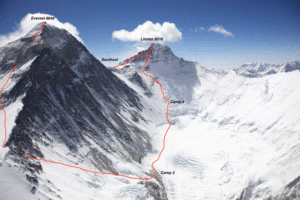
Ueli Steck‘s Everest – Lhotse traverse has been discussed a lot but for completeness he and Tenji Sherpa will attempt to summit Everest via the West Ridge, Hornbein Couloir then descend to the South Col before taking the ridge line proper to the summit of Lhotse. They would then descend via the normal route to Everest Base Camp. Neither climber will use supplemental oxygen. Steck trained on Island Peak in Nepal in February. He hints that he will probably go after the crowds have already summited and when it is warmer since he is climbing without Os.
We followed Kilian Jornet‘s speed climb last Autumn when he wanted to do a speed ascent from the North side. He stopped his effort due to poor climbing conditions. He wanted to try again from the north this Autumn, but the Chinese rejected his permit request, as they have for almost all Autumn permits in late 2017 due to a “scheduled event” so Jornet will try from the north this Spring. His last effort focused on the North Face, not the normal route so it will be interesting to see where he climbs/runs this year. Jornet posted on his blog:
In 2016, bad weather prevented Jornet and his team from attempting the climb but they’re trying again, this time in a different season. Instead of travelling to the Himalayas at the end of summer, the team will attempt it in spring, as Jornet explains: “We wanted to go in August because last year we liked the experience and the conditions, but we can’t get a permit. Last year we learnt a lot that we hope to put into practice this year. It’s certain to be a great experience.”

Another casualty of the Chinese, is the planned Lhotse South Face by Korean Sung Taek Hong. His permit was granted by Nepal but his Chinese sponsor pulled out. Once again, climbing depending on China is problematic with the vagaries of Chinese foreign policy.
Another Autumn 2016 effort that was stopped by conditions was solo Japanese Nobukazu Kuriki no supplemental oxygen attempt from the north. After trying five years in a row in the Autumn, he will give it a go this Spring in his style. Look for him to bring a massive amount of publicity with his huge Japanese following. He has lost nine fingers to frostbite in his previous attempts.
Another returning act is from Slovak Vladimir Strba on the Southwest Face aka the British route. He tried last year with his partner Zoltan Pal but were hit by an avalanche and had to be rescued. Pal is not climbing this time around.
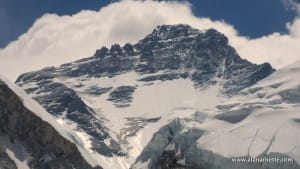
As usual, there will be a slew of attempts on both sides not using supplemental oxygen. Of note, 97.3% of all Everest summits have used supplemental oxygen and of the 282 deaths, 109 have died or 38% attempting to summit without using supplemental oxygen.
The climbers who summit without aid, are in a special physical class, usually professional climbers and not representative of the standard climber. Props to those who accomplish this feat.
Look for record permits to be issued for Lhotse plus several for Nuptse that combine along with the West Shoulder of Everest to define the Western Cwm. More on those peaks as I get it.
And the other 8000ers
I mentioned before to expect a lot of activity throughout the large 8000 meter mountains in Nepal and Tibet and we recently learned of many. Let’s do a brief run down:
I received a press release for a new Cho Oyu route by Louis Rousseau, Adam Bielecki, Rick Allen and Felix Berg. They want to start from the base of the north wall and go directly up an untouched section in the center.
Shishapangma South Face will be attempted by David Gottler and Herve Barmasse
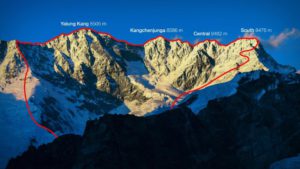
Simone Moro and Tamara Lunger will try a new route following the ridge lines on Kangchenjunga. The pair were on Nanga Parbat together last winter. If you want all the details, Simone and Tamara held an hour long (!) Facebook Live session to announce the Skyline project..
Kang will be one of the more crowded 8000ers outside of Everest with Seven Summits Treks with a large team including the three Sherpanis who summited K2 together in 2014.
Dhaulagiri will also see some action, but not my planned climb due to my injury. Dreamer’s Destination will be there along with 78 year-old Carlos Soria who will attempt his 13th 8000er.
Several climbers are trying to complete their quest to summit all 14 of the 8000ers this spring. Peter Hamor will try to finish on Dhaulagiri. Ferran Lattore’s will be on Everest for his last 8000er plus Ralf Dujmovits who has completed all 14 but wants to summit Everest without Os.
The excellent website Altitude Pakistan reports that the Italian couple Nives Meroi and Romano Benet are looking to finish their 8000ers on Annapurna.
On Manaslu, Spanish Basque climber Madariaga Abaitua Juan Ramon is leading a six member team.
As if this was not enough, over on Makalu, Phil Crampton’s Altitude Junkies is the largest team there. Phil posted he expects 50 foreigners and 25 Sherpas on the peak. A Polish and German team are also there.
OK, so if you are bored with Everest, you can follow those climbs 🙂
Climb On!
Alan
Memories are Everything

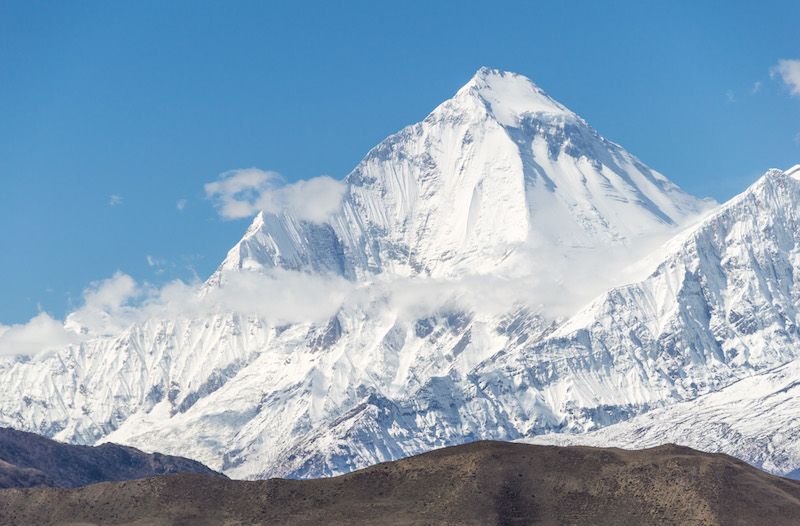
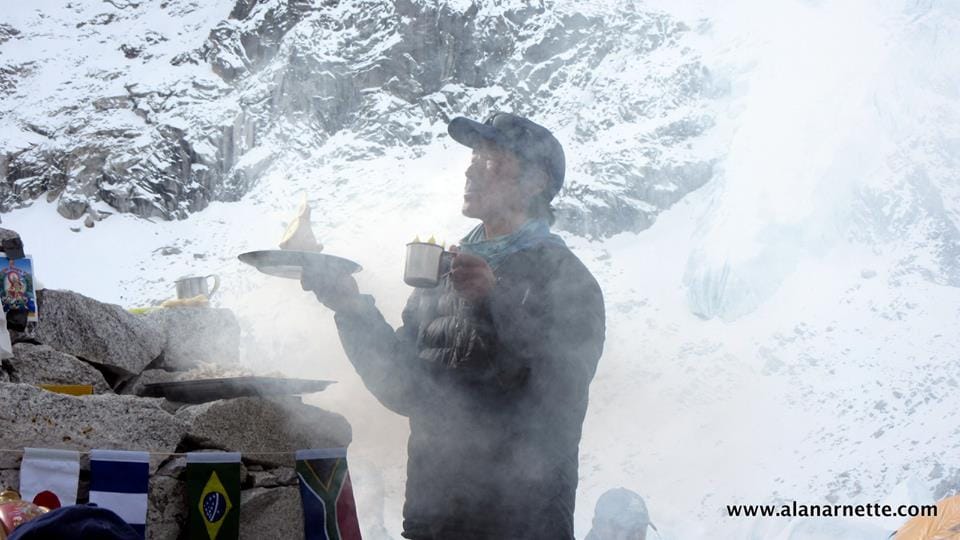


One thought on “Everest 2017: A Busy Season on the 8000ers”
Never bored with Everest
Comments are closed.